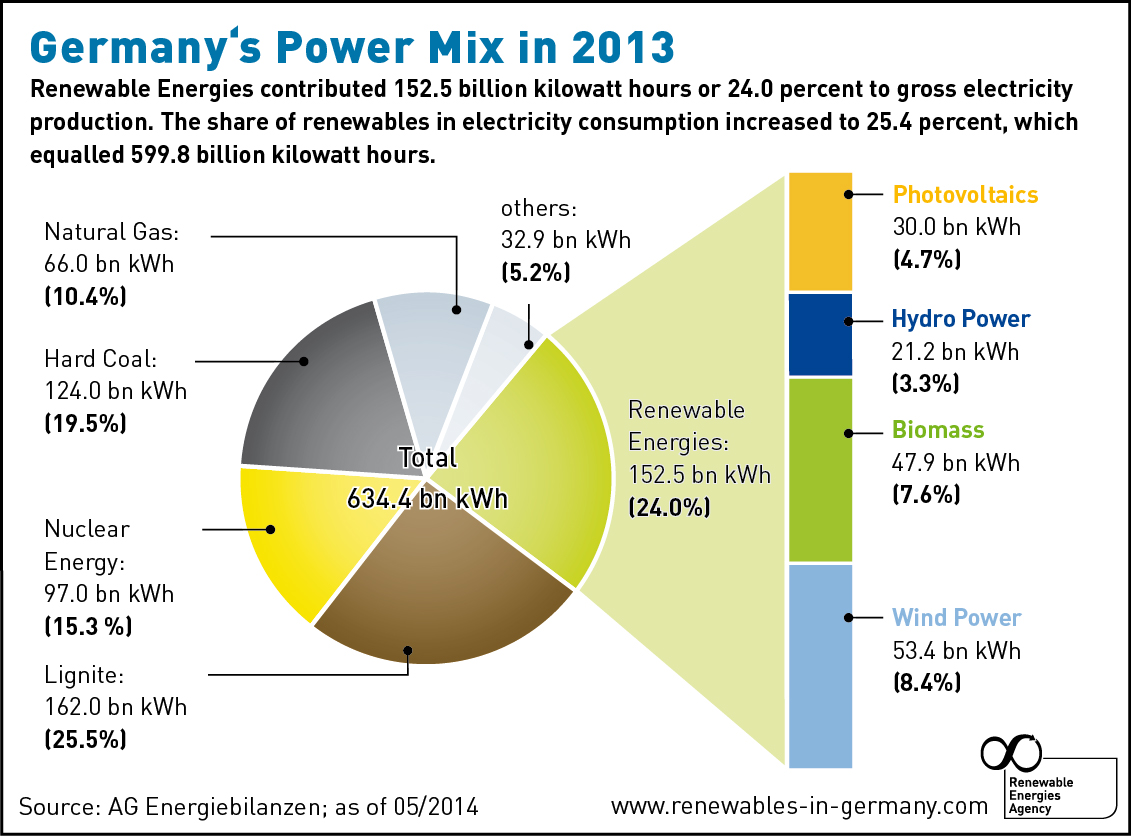14. The power supply is turning green
 Since 2000, the Renewable Energies Sources Act (EEG) promotes the use of wind, solar and hydro power as well as the production of electricity from bioenergy. Since 2004, the use of geothermal energy in the electricity sector has been included in the EEG as well.
Since 2000, the Renewable Energies Sources Act (EEG) promotes the use of wind, solar and hydro power as well as the production of electricity from bioenergy. Since 2004, the use of geothermal energy in the electricity sector has been included in the EEG as well.
The predecessor of the EEG was the Electricity Feed In Act (Stromeinspeisungsgesetz), which set up three basic principles:
1. a guaranteed feed-in tariff for green electricity ensures investment security;
2. a regular reduction of feed-in tariffs for new installations promotes innovation;
3. and the additional costs incurred are carried by electricity consumers in order to avoid strains on the public purse.
These provisions have paved the way for the steady rise of renewable energies in the electricity sector since. Today, almost a quarter of Germany's electricity stems from renewable energy sources.
A three-person household with an annual electricity consumption of 3,500 kilowatt hours promotes the development of renewable energies by means of the so-called EEG surcharge with around 15 Euros per month.
Note, however, that more than half of the surcharge does not directly benefit the renewable energy sector.
Many companies only have to pay a fraction of the surcharge. Even the climate-damaging lignite industry benefits from these exceptions in the EEG surcharge.

Social Media